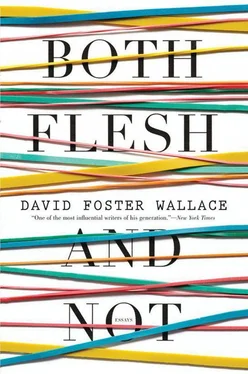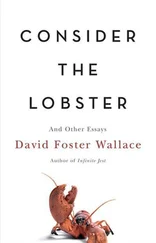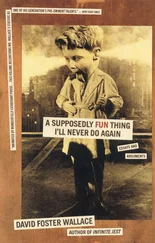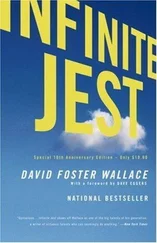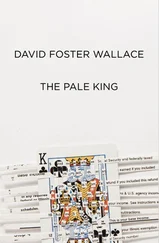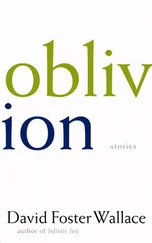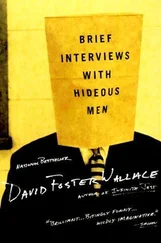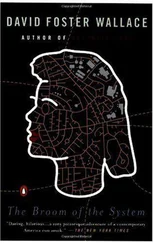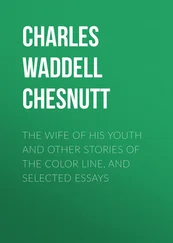5 This is the large (and presumably six-year-old) structure where Wimbledon’s administration, players, and media all have their respective areas and HQs.
6 (Some, like Nadal or Serena Williams, look more like cartoon superheroes than people.)
7 When asked, during the aforementioned Special One-on-One Interview, for examples of other athletes whose performances might seem beautiful to him, Federer mentions Jordan first, then Kobe Bryant, then “a soccer player like — guys who play very relaxed, like a Zinédine Zidane or something: he does great effort, but he seems like he doesn’t need to try hard to get the results.”
Federer’s response to the subsequent question, which is what-all he makes of it when pundits and other players describe his own game as “beautiful,” is interesting mainly because the response is pleasant, intelligent, and cooperative — as is Federer himself — without ever really saying anything (because, in fairness, what could one say about others’ descriptions of him as beautiful? What would you say? It’s ultimately a stupid question):
“It’s always what people see first — for them, that’s what you are ‘best at.’ When you used to watch John McEnroe, you know, the first time, what would you see? You would see a guy with incredible talent, because the way he played, nobody played like this. The way he played the ball, it was just all about feel . And then you go over to Boris Becker, and right away you saw a powerful player, you know? *When you see me play, you see a ‘beautiful’ player — and maybe after that you maybe see that he’s fast, maybe you see that he’s got a good forehand, maybe then you see that he has a good serve. First, you know, you have a base, and to me, I think it’s great, you know, and I’m very lucky to be called basically ledyou‘beautiful,’ you know, for style of play. Other ones have the ‘grinder’ [quality] first, [some] other ones are the ‘power player,’ [still] other ones are ‘the quick guy.’ With me it’s, like, ‘the beautiful player,’ and that’s really cool.”
*(N.B. Federer’s big conversational tics are “maybe” and “you know.” Ultimately, these tics are helpful because they serve as reminders of how appallingly young he really is. If you’re interested, the world’s best tennis player is wearing white warm-up pants and a long-sleeved white microfiber shirt, possibly Nike. No sport coat, though. His handshake is only moderately firm, though the hand itself is like a carpentry rasp (for obvious reasons, tennis players tend to be very callusy). He’s a bit bigger than TV makes him seem — broader-shouldered, deeper in the chest. He’s next to a table that’s covered with visors and headbands, which he’s been autographing with a Sharpie. He sits with his legs crossed and smiles pleasantly and seems very relaxed; he never fidgets with the Sharpie. One’s overall impression is that Roger Federer is either a very nice guy or a guy who’s very good at dealing with the media — or [most likely] both.)
8 Special One-on-One support from the man himself for this claim: “It’s interesting, because this week, actually, Ancic [comma Mario, the towering Top-Ten Croatian whom Federer beat in Wednesday’s quarterfinal] played on Centre Court against my friend, you know, the Swiss player Wawrinka [comma Stanislas, Federer’s Davis Cup teammate], and I went to see it out where, you know, my girlfriend Mirka [Vavrinec, a former Top 100 female player, knocked out by injury, who now basically functions as Federer’s Alice B. Toklas] usually sits, and I went to see — for the first time since I have come here to Wimbledon, I went to see a match on Centre Court, and I was also surprised, actually, how fast, you know, the serve is and how fast you have to react to be able to get the ball back, especially when a guy like Mario [Ancic, who’s known for his vicious serve] serves, you know? But then once you’re on the court yourself, it’s totally different, you know, because all you see is the ball, really, and you don’t see the speed of the ball….”
9 We’re doing the math here with the ball traveling as the crow flies, for simplicity. Please do not write in with corrections. If you want to factor in the serve’s bounce and so compute the total distance traveled by the ball as the sum of an oblique triangle’s *two shorter legs, then by all means go ahead — you’ll end up with between two and five additional hundredths of a second, which is not significant.
*(The slower a tennis court’s surface, the closer to a right triangle you’re going to have. On fast grass, the bounce’s angle is always oblique.)
1 °Conditioning is also important, but this is mainly because the first thing that physical fatigue attacks is the kinesthetic sense. (Other antagonists are fear, self-consciousness, and extreme upset — which is why fragile psyches are rare in pro tennis.)
11 The best lay analogy is probably to the way an experienced driver can make all of good driving’s myriad little decisions and adjustments without having to pay real attention to them.
12 (… assuming, that is, that the sign’s “with heavy topspin” is modifying “dominate” rather than “powerful hitters,” which actually it might or might not — British grammar is a bit doar “dgy)
13 (which neither Connors nor McEnroe could switch to with much success — their games were fixed around pre-modern rackets)
14 Formwise, with his whippy forehand, lethal one-hander, and merciless treatment of short balls, Lendl somewhat anticipated Federer. But the Czech was also stiff, cold, and brutal; his game was awesome but not beautiful. (My college doubles partner used to describe watching Lendl as like getting to see Triumph of the Will in 3-D.)
15 See, for one example, the continued effectiveness of some serve-and-volley (mainly in the adapted, heavily ace- and quickness-dependent form of a Sampras or Rafter) on fast courts through the 1990s.
16 It’s also illustrative that 2002 was Wimbledon’s last pre-Federer final.
17 In the ’06 final’s third set, at three games all and 30–15, Nadal kicks his second serve high to Federer’s backhand. Nadal’s clearly been coached to go high and heavy to Federer’s backhand, and that’s what he does, point after point. Federer slices the return back to Nadal’s center and two feet short — not short enough to let the Spaniard hit a winner, but short enough to draw him slightly into the court, whence Nadal winds up and puts all his forehand’s strength into a hard heavy shot to (again) Federer’s backhand. The pace he’s put on the ball means that Nadal is still backpedaling to his baseline as Federer leaves his feet and cranks a very hard topspin backhand down the line to Nadal’s deuce side, which Nadal — out of position but world-class fast — reaches and manages to one-hand back deep to (again) Federer’s backhand side, but this ball’s floaty and slow, and Federer has time to step around and hit an inside-out forehand, a forehand as hard as anyone’s hit all tournament, with just enough topspin to bring it down in Nadal’s ad corner, and the Spaniard gets there but can’t return it. Big ovation. Again, what looks like an overwhelming baseline winner was actually set up by that first clever semi-short slice and Nadal’s own predictability about where and how hard he’ll hit every ball. Federer surely whaled that last forehand, though. People are looking at each other and applauding. The thing with Federer is that he’s Mozart and Metallica at the same time, and the harmony’s somehow exquisite.
By the way, it’s right around here, or the next game, watching, that three separate inner-type things come together and mesh. One is a feeling of deep personal privilege at being alive to get to see this; another is the thought that William Caines is probably somewhere here in the Centre Court crowd, too, watching, maybe with his mum. The third thing is a sudden memory of the earnest way the press bus driver promised just this experience. Because there is one. It’s hard to describe — it’s like a thought that’s also a feeling. One wouldn’t want to make too much of it, or to pretend that it’s any sort of equitable balance; that would be grotesque. But the truth is that whatever deity, entity, energy, or random genetic flux produces sick children also produced Roger Federer, and just look at him down there. Look at that.
Читать дальше
